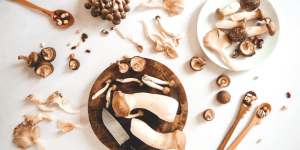Take Your Herb Game To The Next Level
The popularity of herbs in supermarkets and shops has markedly increased over the last 20 years with the rise of celebrity chefs and culinary lifestyle shows. Now is the time to seize the opportunity and take your herb offerings to the next level.
Beyond parsley, sage, rosemary, and thyme …
There is great value in increasing herb ranges beyond the top ten of, Basil, Parsley, Rosemary, Coriander, Dill, Chives, Thyme, Mint, Bay leaf and Oregano.
In Australia, with the popularity of fusion food, customers are exploring a range of cuisines and flavours in their cooking, so it pays to stock a broad variety of herbs. Consider enhancing your range by adding more Asian herbs, such as:
– Lemongrass
– Kaffir lime leaves
– Thai Basil
– Curry Leaves
– Star Anise
How are shoppers using herbs?
Herbs really are a super-food, in edible form they can be added to any dish or drink for breakfast, lunch or dinner. Herbs are packed full of flavour and nutrition and can be presented for sale in many different and interesting ways. Keep in mind your shoppers may be buying herbs for more than edible purposes. Herbs are purchased for tea, medicinal, cosmetic, and fragrant purposes. Stocking herbs in a variety of forms e.g., pastes and jars for refrigeration, plants, fresh-cut and dried, ensures you are meeting the needs of both the occasional and everyday user.
5 top tips for encouraging new herb converts
Herbs remain a high impulse purchase, so if presented and marketed prominently they are also excellent for grabbing the attention of shoppers who aren’t yet regularly using herbs. Here are some tips:
1. Promote their health-giving benefits
2. Bundle together with companion foods e.g., basil with tomato, rosemary with potatoes, lemongrass with bok-choy, coriander with avocado
3. Think seasonal displays, parsley, and oregano with soup ingredients, in Winter rosemary with orange at Christmas, mint with lime in Summer
4. Give hacks for extending the life of herbs through freezing, making pastes, growing their own, and correct storage for fresh cut herbs in a vase of water at room temperature
5. Provide recipes and handy tips for using herbs e.g., whole herbs are used at the beginning of cooking as it takes longer to drawer out the flavour. Chopped herbs are best used just before serving as the herb leaves release their aroma when they are cut open. Use scissors or rip herbs by hand for best results.




